QCA丨各步操作参考文献
本篇推送搭配示范视频观看更佳。
演示视频主要是基于Pappas和Woodside的《Fuzzy-set Qualitative Comparative Analysis (fsQCA): Guidelines for research practice in Information Systems and marketing》一文。长伟兄已经大致翻译过这篇文章,我就不再重复。
萜妹这里着重梳理数据操作部分,并将附上各操作依据的参考文献。
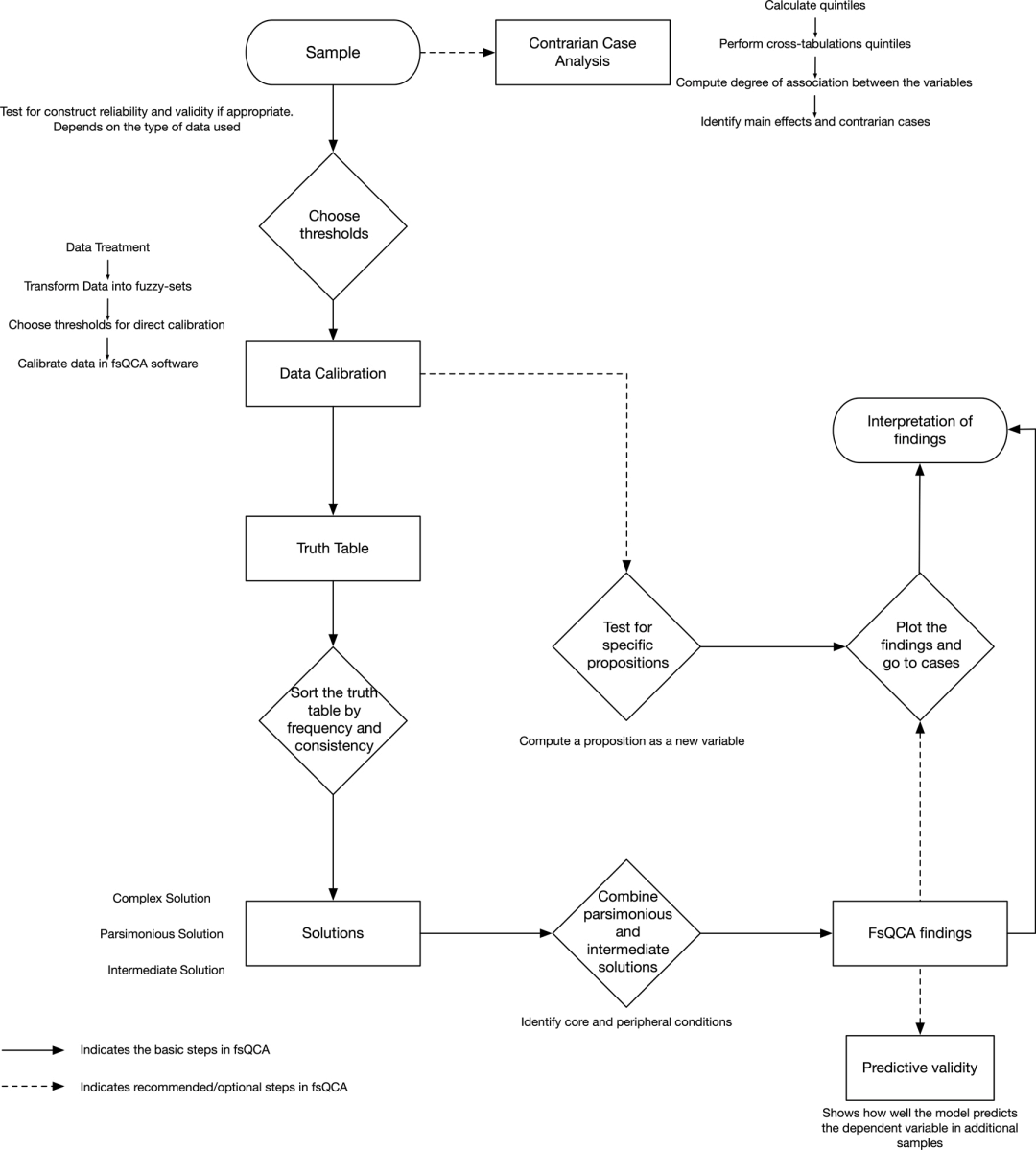
反向案例分析
这一步是为了证明数据是否适合进行定性比较分析,类似于跨层分析中的ICC。
不过目前会进行这一步的研究较少,主要参考文献有:
Woodside, A. G. (2014). Embrace• perform• model: Complexity theory, contrarian case analysis, and multiple realities. Journal of Business Research, 67(12), 2495–2503. Pappas, I. O., Kourouthanassis, P. E., Giannakos, M. N., & Chrissikopoulos, V. (2016). Explaining online shopping behavior with fsQCA: The role of cognitive and affective perceptions. Journal of Business Research, 69(2), 794–803.
【原理介绍:Woodside-2014-JBR】
这篇文章中作者提出在检验变量间关系时,尽管大多数情况都支持主效应,但还是有可能存在与主效应相反的情况,这种情况可以通过反向案例分析来确定。
分析后可得如下表格。
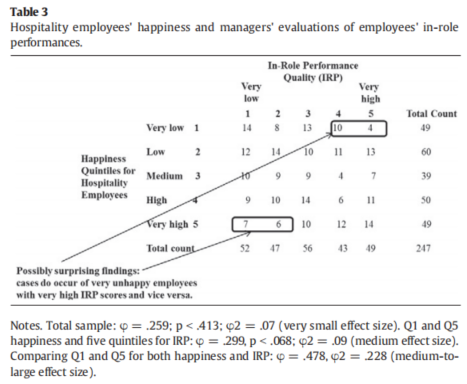
因为有超过四分之一的数据无法用主效应解释,因此适合采用定性比较分析。
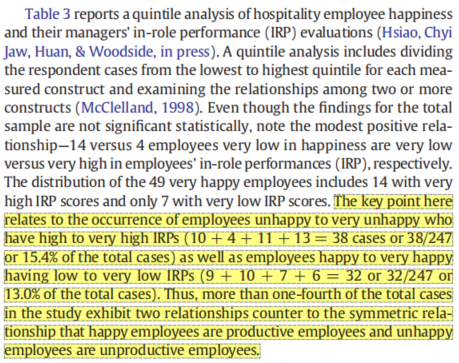
【实操参考:Pappas et al.-2016-JBR】
文中进行了反向案例分析,最终得:
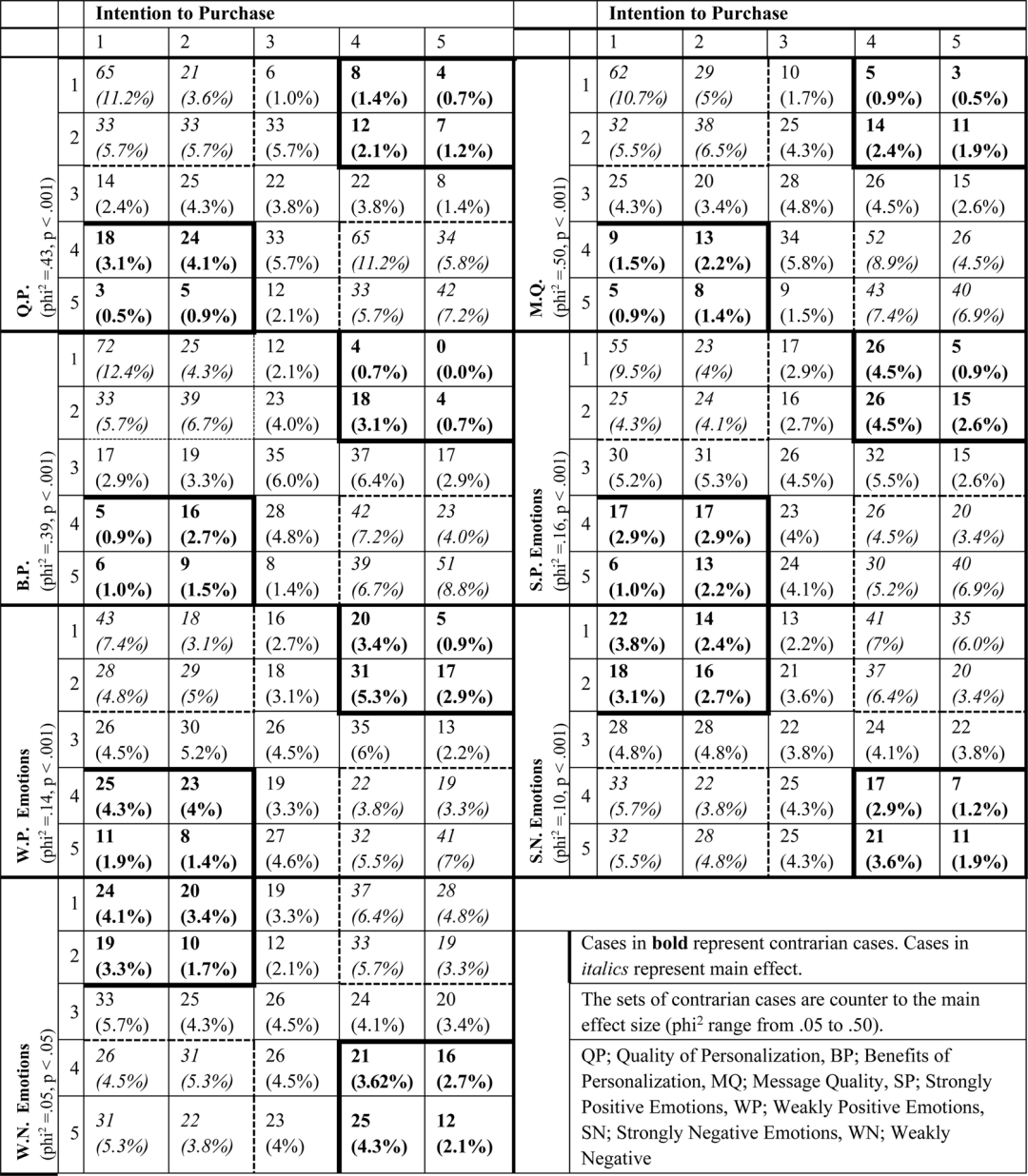
具体的操作是:将各个变量五等分,再进行交叉表格处理,得到一个5×5的表。
黑框中的案例代表主效应,而斜体的案例则不能用主效应来解释,即样本中存在的反向案例。
校准
校准的原理和方法萜妹已经介绍过很多次啦,这次就不展开介绍,只把参考文献附上。
注:萜妹找的参考文献只是部分,不代表只能参考这些。另外,运用对应的参考文献时,最好回原文看看,可能是有特殊的选择理由。
【按95、50、5百分数校准】
Ragin, C. C. (2008). Redesigning social inquiry: Fuzzy sets and beyond (Vol. 240). Wiley Online Library. Rihoux, B., & Ragin, C. C. (2009). Configurational comparative methods: Qualitative comparative analysis (QCA) and related techniques (Vol. 51). Thousand Oaks, CA: Sage Publications.
【按80、50、20百分数校准**】**
Pappas, I. O., Mikalef, P., Giannakos, M. N., & Pavlou, P. A. (2017). Value co-creation and trust in social commerce: An fsQCA approach. Paper Presented at the 25th European Conference on Information Systems (ECIS). Papamitsiou, Z., Pappas, I. O., Sharma, K., & Giannakos, M. (2020). Utilizing multimodal data through fsQCA to explain engagement in adaptive learning. IEEE Transactions on Learning Technologies, 13(4), 689–703.
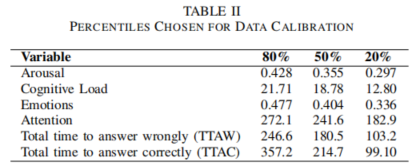
【5点量表:按5、3、1校准】
Fiss, P. C. (2011). Building better causal theories: A fuzzy set approach to typologies in organization research. The Academy of Management Journal, 54(2), 393–420.
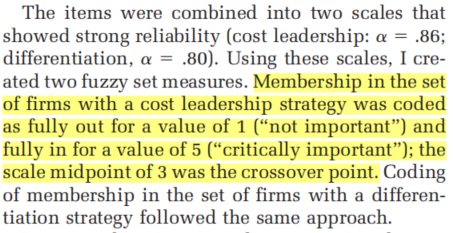
Poorkavoos, M. , Duan, Y. , Edwards, J. S. , & Ramanathan, R. . (2016). Identifying the configurational paths to innovation in smes: a fuzzy-set qualitative comparative analysis. Journal of Business Research, 69(12), 5843-5854.
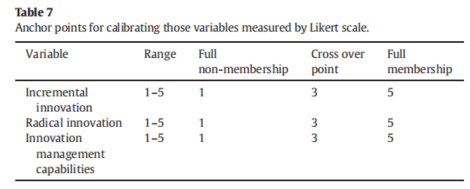
【5点量表:按4、2.5、1】
Fiss, P. C. (2011). Building better causal theories: A fuzzy set approach to typologies in organization research. The Academy of Management Journal, 54(2), 393–420.
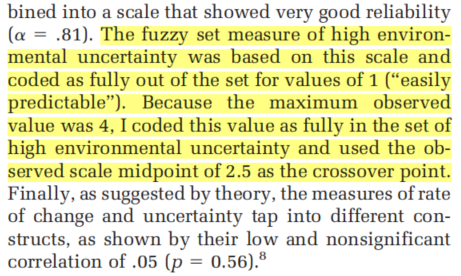
这里是因为实际观察的最大值只有 4。
【5点量表:按5、3.5、1】
Jacobs, S., & Cambre, B. (2020). Designers' road(s) to success: Balancing exploration and exploitation. Journal of Business Research, 115, 241-249.
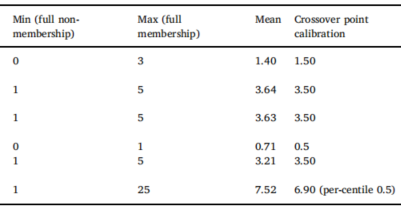
【7点量表:按6、4、2】
Ordanini, A.; Parasuraman, A.; Rubera, G. (2014). When the Recipe Is More Important Than the Ingredients: A Qualitative Comparative Analysis (QCA) of Service Innovation Configurations. Journal of Service Research, 17(2), 134–149.
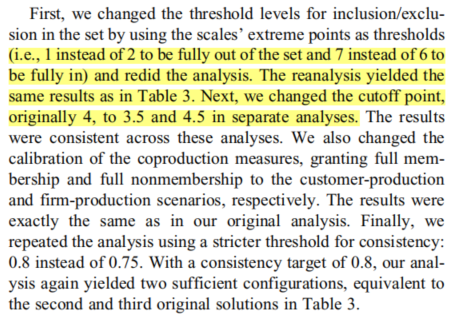
Pappas, I. O., Kourouthanassis, P. E., Giannakos, M. N., & Chrissikopoulos, V. (2016). Explaining online shopping behavior with fsQCA: The role of cognitive and affective perceptions. Journal of Business Research, 69(2), 794–803.

【7点量表:按6、4.5、3】
Mikalef, P., & Pateli, A. (2017). Information technology-enabled dynamic capabilities and their indirect effect on competitive performance: Findings from PLS-SEM and fsQCA. Journal of Business Research, 70, 1-16.
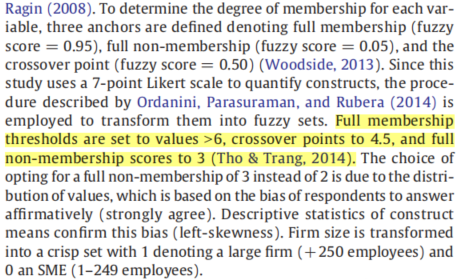
将完全非隶属选为3而不是2,是基于受访者回答肯定(强烈同意)的偏见。
组态分析参数
附上部分涉及组态分析参数的参考文献:
【Overall solution consistency:>0.75】
Pappas, I. O. , & Woodside, A. G. . (2021). Fuzzy-set qualitative comparative analysis (fsqca): guidelines for research practice in information systems and marketing. International Journal of Information Management, 58(3), 102310
【Raw consistency:>0.80】
Fiss, P. C. (2011). Building better causal theories: A fuzzy set approach to typologies in organization research. The Academy of Management Journal, 54(2), 393–420. Dul, J. (2016). Identifying single necessary conditions with NCA and fsQCA. Journal of Business Research, 69(4), 1516–1523.
也可以选择更高的自然断点。
【PRI consistency:>0.70】
Greckhamer, T., Furnari, S., Fiss, P. C., & Aguilera, R. V. (2018). Studying configurations with qualitative comparative analysis: Best practices in strategy and organization research. Strategic Organization, 18(3), 482–495.
实际操作中,这个值很难达到这么高。Pappas et al.,(2016)中最小的PRI为0.45。
【Frequency:小样本为1,大样本看情况】
样本数<60,频率为1。
Capatina, A., Micu, A., Micu, A. E., Bouzaabia, R., & Bouzaabia, O. (2018). Countrybased comparison of accommodation brands in social media: An fsQCA approach. Journal of Business Research, 89, 235–242.
样本数500+,频率2~3。
Pappas, I. O., Kourouthanassis, P. E., Giannakos, M. N., & Chrissikopoulos, V. (2016). Explaining online shopping behavior with fsQCA: The role of cognitive and affective perceptions. Journal of Business Research, 69(2), 794–803.
样本数3000+,频率选择后最好仍包括80%的案例。
Schmitt, A. K., Grawe, A., & Woodside, A. G. (2017). Illustrating the power of fsQCA in explaining paradoxical consumer environmental orientations. Psychology & Marketing, 34(3), 323–334. Sergis, S., Sampson, D. G., & Giannakos, M. N. (2018). Supporting school leadership decision making with holistic school analytics: Bridging the qualitative-quantitative divide using fuzzy-set qualitative comparative analysis. Computers in Human Behavior, 89, 355–366.
稳健性检验
稳健性检验的方式也有很多,最常见的应该是改变校准点或者一致性阈值来进行检验。
张明, & 杜运周. (2019). 组织与管理研究中qca方法的应用:定位,策略和方向. 管理学报, 016(009), 1312-1323.
在Pappas和Woodside的文章中也介绍了,通过对不同样本进行分析,以检验预测有效性。
Pappas, I. O. , & Woodside, A. G. . (2021). Fuzzy-set qualitative comparative analysis (fsqca): guidelines for research practice in information systems and marketing. International Journal of Information Management, 58(3), 102310
啦啦啦,这篇推送就到这里啦。虽然列举了些参考标准,但这也并不代表全部哈,毕竟萜妹对QCA的涉猎还是有限的,小可爱们如果能有所补充就更好啦。
最后,QCA的更新会暂时告一段落,目前手头上没有堆积的学术素材啦,下周大概率会是日常吼。
那我们下周见啦~
往期推送
原文推送:
